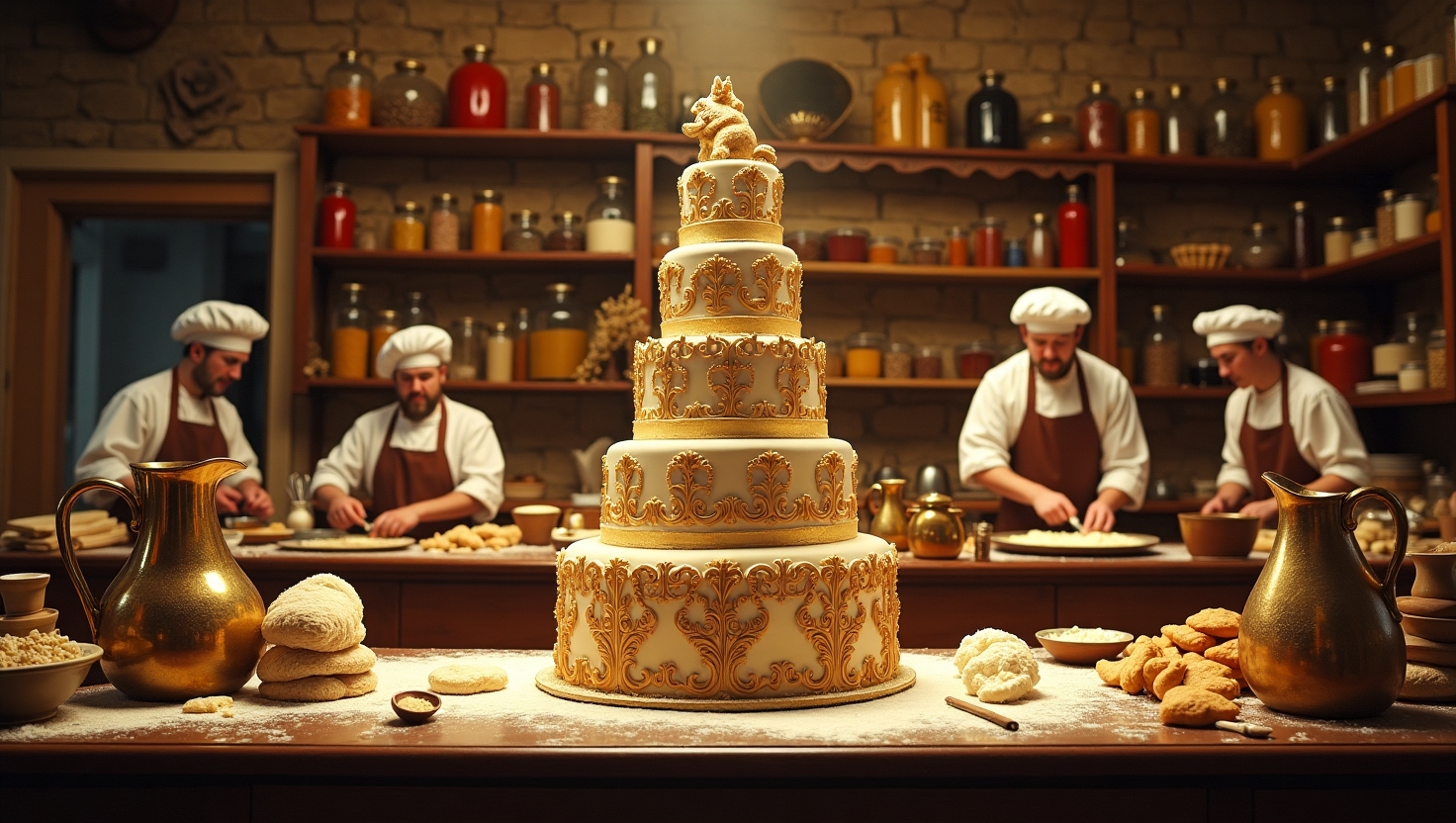The Sweet Tale of Cake: A Journey Through History

Introduction

Who doesn’t love cake? Whether it’s a slice of rich chocolate indulgence or a simple sponge dusted with sugar, cakes have a special place in our hearts (and bellies). But have you ever wondered how cakes came to be? This delightful treat has a fascinating history that stretches back thousands of years, shaped by cultural, technological, and culinary revolutions. Let’s take a delicious journey through time to uncover the story of cakes.
Ancient Origins of Cake
The First Cakes in History
The word “cake” originates from the Old Norse word kaka, which loosely translates to “a baked good.” However, the cakes of ancient times were far from the fluffy desserts we know today.
Ancient Egyptian Honey Cakes

The Egyptians were among the first to experiment with a cake-like creation. They made dense bread sweetened with honey, often adding nuts or dried fruits for texture. These early cakes were offered to gods during religious ceremonies.
Roman Contributions to Baking
The Romans elevated cake-making by incorporating eggs and butter into their recipes, which created a richer, softer texture. They even celebrated birthdays and weddings with simple cakes, proving that cake has been a party essential for centuries.
Evolution of Ingredients in Ancient Times
Early cakes were more about sustenance than indulgence. Flour, honey, and primitive leavening agents like yeast were the building blocks. Spices and dried fruits were added when available, making these cakes a rare luxury.
Medieval Cakes
The Rise of Cakes in Medieval Europe
During the medieval era, cakes began to take on a more distinct form. However, they were still considered a luxury item reserved for the elite.
Cakes for Nobility
Lavish cakes were adorned with exotic spices like cinnamon and nutmeg, and their ingredients showcased wealth. Marzipan-covered cakes became popular among the European aristocracy.
The Humble Cakes of the Common Folk
For the lower classes, cakes were often simple, bread-like, and sweetened with honey or molasses. They lacked the refined ingredients available to the wealthy.
The Renaissance Era

Cake Baking Flourishes During the Renaissance
The Renaissance period brought about major advancements in baking, thanks to trade routes and sugar plantations.
Sugar Becomes the Sweet Revolution
With sugar becoming more accessible, cakes transformed from coarse bread-like treats into sweeter, softer creations. This was the era where cakes started to resemble the desserts we enjoy today.
Cakes as Symbols of Wealth and Celebration
Elaborate cakes became symbols of status, often crafted for grand celebrations. Ornamental decorations and multi-tiered designs were the pride of noble households.
Industrial Revolution and Cake
How Technology Transformed Baking
The Industrial Revolution revolutionized the world of cake baking, making the process faster, cheaper, and more consistent.
Introduction of Baking Powder
The invention of baking powder in the 19th century replaced yeast, leading to lighter, fluffier cakes. It was a game-changer that made baking more accessible.
Mass Production of Cakes
With factories producing standardized ingredients and equipment, cakes could be made en masse. Suddenly, cakes weren’t just for the wealthy—they became a treat for all.
Modern Cakes
The Evolution of Cake in the 20th and 21st Centuries
The 20th century brought convenience to the forefront of baking. Innovations like pre-made cake mixes and electric ovens transformed home baking.
The Rise of Cake Mixes
Brands like Betty Crocker and Pillsbury made baking cakes a breeze, encouraging home cooks to experiment.
Globalization and Cultural Influences
Cakes from different cultures—like Japanese cheesecakes and French macarons—gained global popularity, creating a melting pot of baking traditions.
The Role of Technology in Cake Decoration
Today, cakes are not just desserts but works of art. Technology, like 3D printing and edible ink, has taken cake decorating to new heights.
Cultural Significance of Cakes

Cakes as Universal Symbols
Cakes hold a deep cultural significance, transcending borders and traditions.
Religious and Festive Traditions
From Christmas fruitcakes to Mooncakes during the Mid-Autumn Festival, cakes are often central to religious and cultural celebrations.
Wedding Cakes and Their Importance
The towering wedding cake has long symbolized prosperity and happiness in marriage, with each tier carrying its own meaning.
Conclusion
From Ancient Honey Loaves to Modern Masterpieces
From humble honey cakes baked for gods to towering wedding cakes adorned with intricate details, the history of cake is a testament to human creativity and celebration. Whether you’re biting into a slice of history or a modern masterpiece, one thing’s for sure—cake is here to stay.
FAQs
1. What is the oldest known cake recipe?
The oldest recorded cake recipe dates back to ancient Egypt, where honey-sweetened bread was baked.
2. How did cakes become associated with celebrations?
Cakes were first used in religious offerings and later became symbols of wealth and celebration during the Roman and medieval eras.
3. When was baking powder invented?
Baking powder was invented in the 19th century, revolutionizing how cakes were made.
4. Why are wedding cakes tiered?
Tiered wedding cakes symbolize prosperity, with each layer carrying meaning, from happiness to fertility.
5. What are some unique cultural cakes?
Mooncakes in China, Panettone in Italy, and Tres Leches in Latin America are examples of culturally significant cakes.

